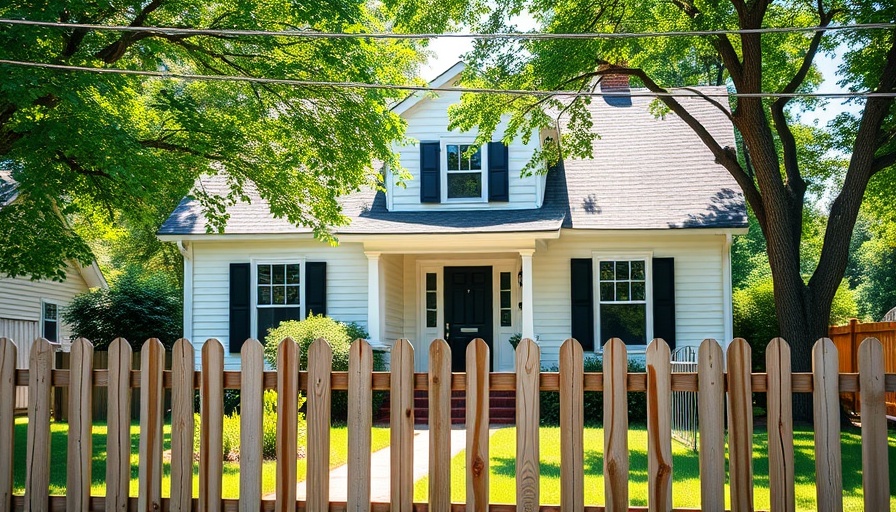
The Evolving Landscape of Homeownership
Throughout the decades, starter homes represented the first landmark for many aspiring homeowners. Typically modest in size and price, these residences were considered stepping stones towards larger, more permanent living situations. But as the housing market shifts and interest rates swell, the question lingers: are starter homes becoming a relic of the past?
What Defines a Starter Home Today?
Real estate experts have pointed out that the definition of a starter home is evolving, primarily due to recent economic challenges. Jenna Stauffer, a Sotheby’s Realty agent, states that “true starter homes are scarce for first-time buyers today.” The combination of escalating prices, increased interest rates, and rising taxes creates a daunting environment for those looking to make their first investment.
As Orphe Divounguy, Zillow's senior economist, notes, the mortgage landscape has shifted dramatically. Mortgage rates that previously hovered around 3% have more than doubled, skyrocketing to over 6%. For contemporary buyers, breaking even seems to require a commitment to homeownership that ranges between 7 to 9 years—far longer than previous generations needed. The traditional notion of flexibility and moving up the property ladder is now challenged by economic barriers that bind individuals to their homes.
The Implication of Aging Homeowners
Another factor contributing to the scarcity of starter homes is the growing trend of baby boomers choosing to age in place. Homeowners are now remaining in their residences for almost 12 years on average, compared to only 6.5 years two decades prior. Angie Hicks, co-founder of Angi, observes that “the combination of how hard the home buying process has become and the rising interest rates” has reshaped how people think about homeownership. The permanence of the buying decision is significant; prospective homebuyers now weigh long-term implications more heavily than before.
First-Time Buyers: A New Demographic Shift
The median age of first-time homebuyers has risen to 35, aligning with the stage in life where many are focusing on their careers and families. Unlike younger generations who might have viewed homes as transitory, today’s early-stage buyers are seeking properties that fulfill both their immediate needs and their future plans. With nearly 67% of homeowners preferring to renovate to meet their evolving needs rather than move, it’s evident that sentiment has shifted.
Rising Value of Starter Homes
Despite the prevalent challenges associated with entering the housing market, the value of starter homes is paradoxically increasing faster than that of typical homes. Currently, the average starter home is valued at $196,611, a figure that remains within reach for many median-income households. However, this price has surged by a staggering 54.1% over the past five years, eclipsing the 49.1% increase seen in typical home values. As more buyers sink their potential aspirations into a single property, the pressure surrounding these starter residences only amplifies.
Future of Starter Homes: What Lies Ahead?
As we look ahead, the future of starter homes remains tenuous. The housing market reflects broader economic trends, including inflation and rising living costs, which could continue to shape purchasing behavior. While the lack of inventory poses an immediate concern, the concept of homeownership continues to evolve, potentially influencing how future generations engage with real estate.
In conclusion, while the dream of owning a first home persists, the landscape for entering the property market is starkly different now. The dynamics of homeownership are redefining what it means to start down the path of owning, necessitating long-term commitment and a reevaluation of previously held beliefs about real estate.
For prospective homebuyers navigating this challenging arena, consider the financial implications carefully before jumping in. Reassess your needs, look for opportunities rather than constraints, and embrace this new reality.
 Add Row
Add Row  Add
Add 




 Add Row
Add Row  Add
Add 


Write A Comment